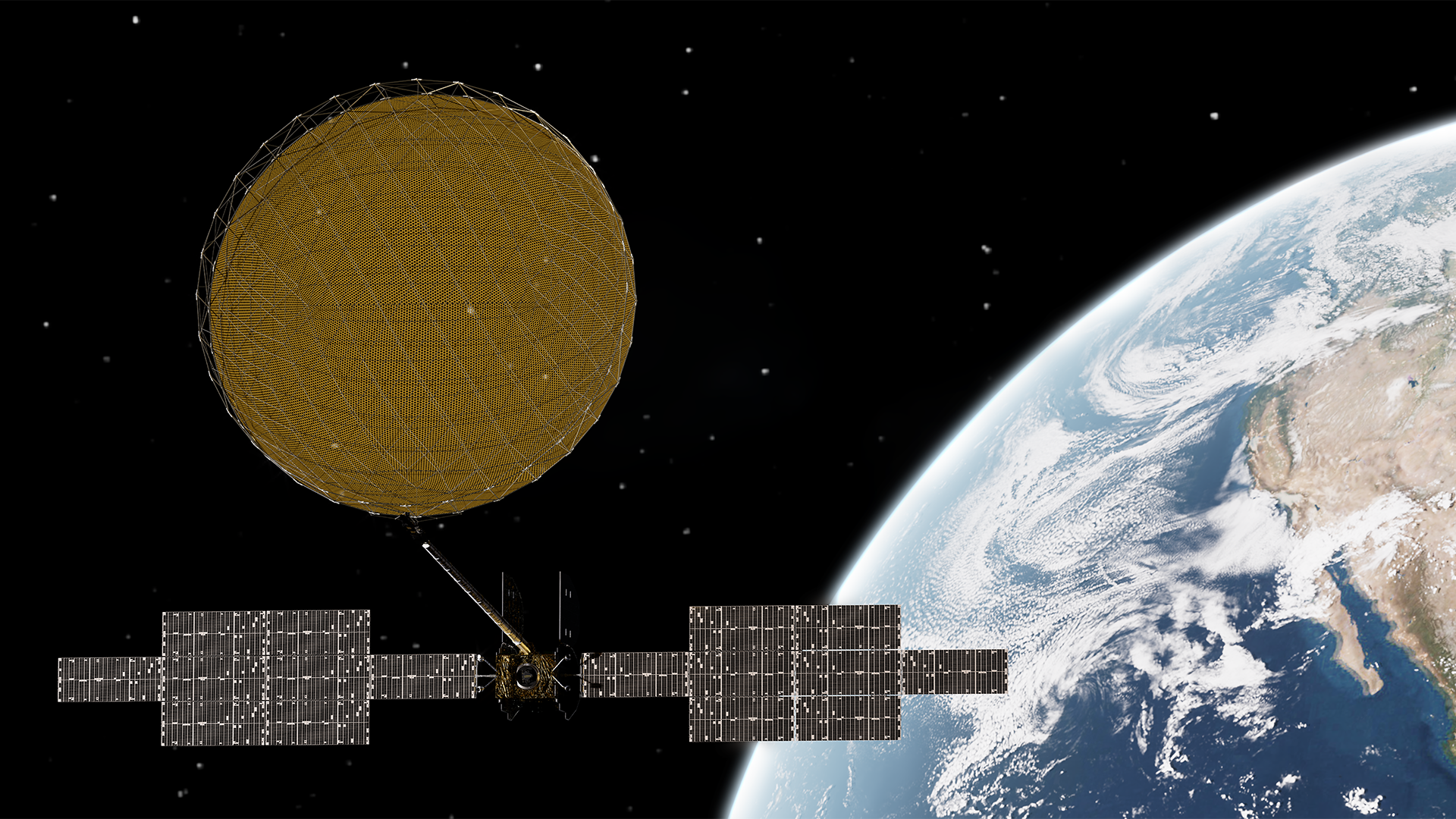Products You May Like
TAMPA, Fla. — Viasat is holding off on a contingency plan for ViaSat-3 Americas in the hope it could still get some capacity from the broadband satellite despite its defective antenna, the operator’s chair and CEO Mark Dankberg said Aug. 9.
Engineers have been able to get end-to-end measurements showing the rest of the satellite is operating as expected or better, Dankberg said during the company’s earnings call.
But while “the fact that we can communicate through it is hopeful,” he said more data is needed to determine whether Viasat will ultimately get little to no capacity from the satellite, or something closer to the 1 terabit per second (Tbps) it had been expecting.
Viasat expects to have enough data by its next earnings announcement in November to move forward with one of the multiple contingency plans it has in the works to cover this wide range of potential scenarios.
Options include building a replacement from scratch, buying capacity from other operators, and redeploying spacecraft from Viasat’s current fleet of 19 satellites.
Viasat could also reallocate one of its two upcoming ViaSat-3 satellites to cover the Americas instead of elsewhere.
Boeing is under contract to build all three ViaSat-3 satellites for payloads provided by Viasat.
Dankberg did not name the antenna supplier for ViaSat-3 Americas but, according to a CBS News report citing a Viasat executive before the satellite’s launch April 30 on a SpaceX Falcon Heavy, it was supplied by Northrop Grumman’ss Astro Aerospace.
The second ViaSat-3 satellite was slated to launch on an Atlas 5 rocket from United Launch Alliance this fall to cover Europe, the Middle East, and Africa (EMEA). The third and final ViaSat-3 satellite targeting Asia Pacific (APAC) is due to launch half a year later.
ViaSat-3 EMEA uses the same antenna as ViaSat-3 Americas, and Dankberg said changes to its launch schedule also depend on the corrective actions it takes.
“It was pretty close to being able to launch when we had this antenna anomaly, he added.
ViaSat-3 APAC uses a different antenna so its launch is unaffected.
Financial hit
Viasat said issues with ViaSat-3 Americas, which is insured, will mainly affect its performance in the U.S. fixed broadband market, representing only 13% of total revenues following its recent acquisition of British satellite operator Inmarsat.
Dankberg said the operator expects to meet a backlog of demand it has from airline customers “at least for some period of time” with bandwidth from other satellites.
While the company does not expect the anomaly on ViaSat-3 Americas to affect financial results for its fiscal year 2024 that ends March 30, 2025, it does anticipate an impact the following year.
“We believe we will continue to grow in fiscal year 2025 as well,” Dankberg said, “but not to the same extent we would have without the anomaly.”
Viasat reported $780 million in revenue for the three months to the end of June, up 36% compared to sales from continuing operations in the same period last year.
Adjusted EBITDA, or earnings before interest, taxes, depreciation and amortization, jumped 87% to $183 million.
The results include Inmarsat’s one-month contribution of about $134 million in revenue and $72 million in adjusted EBITDA following its acquisition earlier this year.
